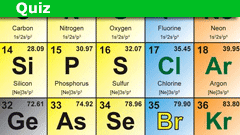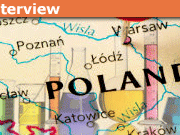It’s Elemental! The Periodic Table Quiz
The periodic table is something we all are made aware of early in schooling, but have you really looked at it closely and learned about it’s lessor known facts? Let’s find out!
Table of Contents
Did you know?
There are many periodic tables with structures different than that of the standard form we use today. Within 100 years of the creation of Mendeleev’s table in 1869 it has been calculated that atleast 700 other periodic table versions were introduced.
Ready for your next quiz? How well do you know about the LHC?
1. What is the Periodic Table?
The Periodic Table is a tabular arrangement of the chemical elements, organized based on their atomic number, electron configuration, and recurring chemical properties. Elements are presented in order of increasing atomic number in rows called periods and columns called groups.
2. Who Created the Periodic Table?
The Periodic Table was created by Russian chemist Dmitri Mendeleev in 1869. Mendeleev’s version of the periodic table organized elements by increasing atomic weight and by their chemical properties, and it laid the foundation for the modern periodic table.
3. How are Elements Arranged in the Periodic Table?
Elements in the Periodic Table are arranged in order of increasing atomic number (the number of protons in the nucleus). The rows, or periods, represent the number of electron shells an atom has. The columns, or groups, contain elements with similar chemical behaviors due to their similar electron configuration.
4. What are the Different Groups in the Periodic Table?
The Periodic Table is divided into several groups: alkali metals, alkaline earth metals, transition metals, post-transition metals, metalloids, nonmetals, halogens, and noble gases. Each group has distinct properties and behaviors.
5. What is the Significance of the Periodic Table in Chemistry?
The Periodic Table is fundamental in chemistry as it provides a framework to understand and predict the properties and behaviors of elements. It helps in understanding chemical reactions, bonding, and trends in element properties.
6. How is the Periodic Table Updated?
The Periodic Table is updated when new elements are discovered or synthesized. The International Union of Pure and Applied Chemistry (IUPAC) is responsible for approving the addition of new elements and their names and symbols.
7. What are Periodic Trends on the Table?
Periodic trends refer to patterns in element properties across the Periodic Table. These include atomic radius, electronegativity, ionization energy, and electron affinity. Understanding these trends allows chemists to predict the properties of elements and their compounds.
8. Are There Different Versions of the Periodic Table?
Yes, there are different versions of the Periodic Table, each designed for specific purposes. These include the standard periodic table, the electron configuration table, and various other versions that highlight different chemical properties and relationships.
I have a BS in Information Sciences from UW-Milwaukee. I’ve helped manage Physics Forums for over 22 years. I enjoy learning and discussing new scientific developments. STEM communication and policy are big interests as well. Currently a Sr. SEO Specialist at Shopify and writer at importsem.com




Leave a Reply
Want to join the discussion?Feel free to contribute!